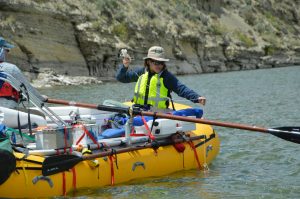Metaverse Land Grabs: Virtual Real Estate’s Tangible ROI
The concept of virtual real estate has been around for decades, with virtual worlds like Second Life and video games like Minecraft offering players the ability to buy and own digital land. However, in recent years, the rise of the metaverse has brought a whole new level of value to virtual real estate. With major companies like Facebook, Microsoft, and Epic Games investing billions of dollars into creating their own metaverse, the virtual land grab has officially begun. In this article, we’ll be exploring the tangible return on investment (ROI) that virtual real estate can bring in the metaverse. So buckle up and get ready to dive into the world of metaverse land grabs.
The Metaverse and Virtual Real Estate
First, let’s define what the metaverse is. The term was coined by sci-fi author Neal Stephenson in his 1992 novel, Snow Crash, and is now used to describe a shared virtual space created by the convergence of virtual reality, augmented reality, and the internet.
Think of it as a massive, persistent, and immersive virtual world where people can interact with each other and digital objects in real-time. It’s essentially a hybrid of the physical and digital world, and many experts believe that it will revolutionize the way we work, play, and do business.
So how does virtual real estate fit into this concept of the metaverse?
Similar to how physical real estate gives you a place to live, work, or invest, virtual real estate in the metaverse provides users with a space to create, collaborate, and monetize. And just like physical real estate, the value of virtual real estate is determined by location, size, and demand.
The Rise of Virtual Land Grabs
The potential of the metaverse has drawn significant attention from tech giants, investors, and even celebrities. And with this growing interest comes the race to claim virtual land before it’s all gone, in what some are calling a virtual land grab.
For example, in March 2021, a virtual plot of land in the metaverse game, Decentraland, sold for a staggering $913,000. And just a month later, another plot of land sold for over $2.4 million. This trend of skyrocketing virtual real estate prices is not just limited to Decentraland, but also seen in other metaverse platforms like The Sandbox and Cryptovoxels.
But what makes these virtual plots of land so valuable?
One reason is scarcity. Most metaverse platforms have a limited supply of virtual land, making it a valuable commodity to own. Additionally, as more people enter the metaverse and create virtual experiences, the demand for prime virtual real estate will only continue to increase.
Tangible ROI of Virtual Real Estate
So why are people investing hundreds of thousands and even millions of dollars for virtual land?
The answer lies in the potential of tangible ROI. Just like physical real estate, virtual real estate in the metaverse can generate revenue through various means, such as:
1. Renting and Leasing
Similar to how you can rent out a house or an apartment, virtual real estate can also be leased out to other users for a fee. For example, a virtual store in the metaverse can be rented out to a business owner looking to showcase and sell their products to a global audience.
2. Advertising and Sponsorships
As the metaverse becomes a hub for digital experiences, businesses will be looking to advertise and sponsor events and locations within it. This opens up opportunities for virtual real estate owners to generate revenue through brand partnerships and advertisements placed on their virtual properties.
3. Virtual Events and Experiences
The metaverse offers endless possibilities for hosting virtual events and experiences, from concerts and conferences to art exhibitions and film festivals. Owning a virtual event space or location can generate revenue through ticket sales, sponsorships, and merchandise sales.
4. Appreciation in Value
As the metaverse continues to grow and evolve, the value of virtual real estate is expected to increase significantly. Similar to how physical real estate can appreciate over time, owning virtual real estate now could result in a substantial return on investment in the future.
The Future of Virtual Real Estate in the Metaverse
The rise of the metaverse and the increasing interest in virtual real estate has sparked a new era of investment and innovation. With the potential for tangible ROI and an ever-expanding user base, virtual real estate is set to become a lucrative market in the metaverse.
As we continue to blur the lines between the physical and digital world, the importance of virtual real estate will only continue to grow. It’s a tangible asset in a virtual world, and savvy investors and businesses are taking notice.
So the next time you hear about a virtual land grab or someone spending millions on a virtual plot of land, remember that it’s not just a digital purchase – it’s a tangible investment in the metaverse’s future.
In Conclusion
The metaverse has opened up a whole new realm of opportunities, and virtual real estate is one of the most exciting and valuable assets in this digital world. With potential for tangible ROI and a growing demand for prime virtual locations, it’s no wonder why people are jumping at the chance to own a piece of the metaverse. So keep an eye out for the next big virtual land grab – it may just be the best investment you’ll ever make in the metaverse.











